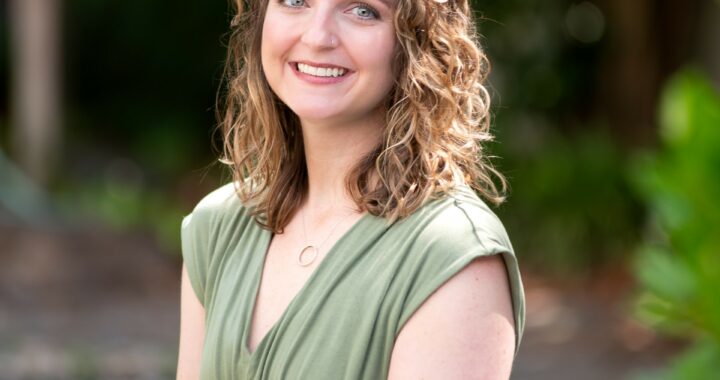UMW Has Gender Neutral Dorms
4 min readBy Robyn Giannini
For the first time ever, men and women students at UMW may be able to room together. It is not in effect yet, but that is the ultimate goal of a conceptual living program on campus that aims to take emphasis off of gender.
If it eventually does come to pass, UMW will be the first public university in Virginia to ever implement such a program.
Next year, the University of Mary Washington will offer students the option to live in a residence community that focuses on the specific theme of gender as part of the Conceptual Living Program in Residence Life.
The Conceptual Living Program provides students the opportunity to reside in a uniquely themed community that they themselves personally design.
Christine Porter, the director of Residence Life, emphasized that the option to create a specifically themed living environment in the residence halls is available to all students on campus.
Themed communities in the past have included such groups as the International Living Center in Framar, various language groups, and even a collection of students one year who deemed themselves the “Physically Active Fitness Friends.”
Students that express interest in creating a specifically themed housing community need only to apply for the program through Residence Life, obtain a faculty advisor, and meet certain educational goals required by the themed housing community.
These educational goals include various activities and programs that are aimed to both unite the students within the community, as well as to and educate the student body of Mary Washington about their particular interest.
“We want these communities to be vibrant, but we also want them to be contributory,” Porter said. “We want them to be adding value to the residence experience here at Mary Washington.”
Porter emphasized the importance of the students involved in the conceptual living program working towards specific goals.
“If you don’t know what you want to achieve, you’re not going to be able to figure out how to get there,” she said.
The students involved in the Gender-themed Conceptual Living Program originally wanted to create a residential environment where the idea of gender was completely ignored.
Mary Pilger, a senior at UMW, is one of the key founders of the program.
“[The idea of gender neutral housing is to] room with a person, not a gender,” she said.
Pilger, along with the other founders of the community, asserted that there is a profound difference between an individual’s biological sex as opposed to their socially constructed gender.
She explained that the term “sex” refers to the biological distinction between a man or woman. A person’s gender, on the other hand, is a much more complicated issue.
Pilger declared that an individual’s gender encompasses the socially constructed expectations for a man or a woman within the context of our current society.
“Gender is what’s between your ears, and sex is what’s between your legs,” she said.
Freshman Charlie Girard, another founding member of the housing community, explained that traditional residential housing isn’t right for everyone.
“[It] tends to marginalize GLBT (gay, lesbian, bisexual, or transgender) students that might feel more comfortable living in environments where there are multiple genders,” he said.
Girard also explained that traditional student housing on campus tends to alienate transgender students whose sexes don’t match their genders.
“Therefore they end up rooming with people whom they really may not relate to, and they just might feel more comfortable in other living environments,” he said.
Yet Girard emphasized that the most important aspect of gender-neutral housing, aside from its educational and community purposes, is to provide a safe and comfortable living environment for all students, regardless of their gender or sexuality.
Girard is also the chair of a new sub-committee that was formed this year in PRISM called the Gender Diversity Statement Project. Current goals of the project include trying to get gender identity and expression added to the anti-discrimination policy, and the attempt to implement gender-neutral housing in the residence halls.
In a completely gender-neutral residential environment, which Pilger and Girard hope to obtain in the future, members of the community would be able to live together regardless of their gender, biological sex, or sexual orientation.
However, the students residing in the themed housing community next year will still technically be separated by their biological sex. In fact, all the members of the gender-themed housing community are currently biologically female.
As it stands, the gender-themed housing community will be located next year in Madison Hall, composing four rooms and eight students.
“[Residence life is] not at a place at this time to make that full leap into gender neutral housing, but I do believe that this is a great place to start,” Porter said.
UMW will be joining fifty-six other schools that currently offer gender- neutral housing as a residential option (specific standards and requirements varying according to the specific university).
Pilger, Girard, and Porter all emphasize that the entire purpose of the program is to reach out to the student body of Mary Washington in order to educate and unite the campus community.
Pilger said that she is not certain how many of the students on campus are aware of the differences in gender identity. She claimed that this is simply due to a lack of exposure of the specific issues of gender rights.
“I think that exposing campus to the fact that just because people are different,” Pilger said. “They’re not just some nebulous concept, like, hey, my name’s Mary Pilger, and I don’t fit into your gender binary; I’m not trying to rub it in your face, but get used to me, because I’m real.”


